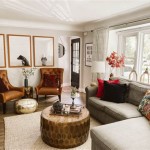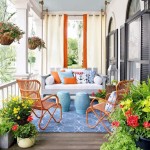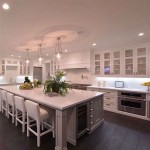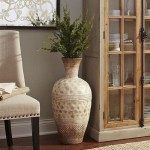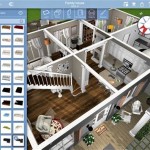1950s Home Decor: A Post-War Era of Optimism and Style
The 1950s marked a significant shift in home decor, reflecting the post-war boom, newfound prosperity, and an optimistic outlook on the future. This era embraced vibrant colors, playful patterns, and a blend of modern and traditional elements that continue to inspire interior design today.
One of the defining features of 1950s home decor was the use of bold, saturated colors. Walls often featured shades like turquoise, pink, sunshine yellow, and mint green. These hues created a cheerful and energetic atmosphere, reflecting the era's sense of hope and prosperity. Accent colors, such as black, white, and gold, were used sparingly to provide contrast and visual interest.
Pattern played a significant role in 1950s interior design. Geometric shapes, atomic motifs, and stylized floral prints were popular choices for wallpaper, upholstery, and curtains. These patterns added a playful touch and reflected the era's fascination with science and technology. Large-scale patterns were often used to create a dramatic focal point in a room.
Furniture in the 1950s embraced both modern and traditional styles. The rise of modernism brought sleek, minimalist designs featuring clean lines and simple forms. Popular materials included chrome, plastic, fiberglass, and wood. Alongside modern pieces, traditional furniture styles, such as Colonial and Victorian, remained popular, often updated with brighter fabrics and playful patterns.
The open-plan living concept gained popularity in the 1950s, promoting a sense of spaciousness and togetherness. Living rooms, dining areas, and kitchens were often combined into one large space, facilitating interaction and entertaining. This layout reflected the growing importance of family life and social gatherings.
Kitchens in the 1950s underwent a significant transformation, embracing modern conveniences and colorful appliances. Pastel-colored refrigerators, stoves, and dishwashers became status symbols, representing the era's technological advancements. Linoleum flooring in bold checkerboard or floral patterns was a common feature, adding a playful touch to the functional space.
Bathrooms followed the trend of vibrant colors and playful patterns. Pink and turquoise were particularly popular choices for bathroom fixtures and tiles. Wallpaper featuring floral or geometric patterns was often used to create a cheerful and inviting atmosphere. Chrome fixtures and rounded mirrors added a touch of elegance and sophistication.
Lighting in the 1950s emphasized functionality and style. Starburst clocks and atomic-inspired light fixtures became iconic symbols of the era. Floor lamps with sculptural bases and patterned shades provided ambient lighting, while table lamps with ceramic bases added a decorative touch.
Accessories played a crucial role in completing the 1950s aesthetic. Knick-knacks, figurines, and decorative objects were often displayed on shelves and tables, adding personality and charm to the space. Popular motifs included animals, flowers, and abstract shapes. Wall art often featured landscapes, portraits, or abstract compositions.
The influence of Hollywood glamour was evident in 1950s home decor. Starlet portraits, movie posters, and Hollywood Regency-inspired furniture added a touch of elegance and sophistication. This trend reflected the growing influence of mass media and popular culture on interior design.
The rise of suburbia and the increasing availability of consumer goods contributed to the democratization of style in the 1950s. Mass-produced furniture and home decor items made it possible for a wider range of people to access the latest trends and create stylish homes.
The legacy of 1950s home decor continues to influence contemporary interior design. The era's vibrant colors, playful patterns, and blend of modern and traditional elements remain popular choices for homeowners seeking a retro-inspired aesthetic. The enduring appeal of 1950s design reflects its optimistic spirit and timeless charm.
Understanding the defining characteristics of 1950s home decor provides valuable insights into the social and cultural context of the era. The style reflects the post-war optimism, the rise of consumerism, and the evolving role of the home as a space for family life and social gatherings.
Reproducing the 1950s aesthetic involves careful consideration of color palettes, patterns, furniture styles, and accessories. Successfully incorporating these elements can create a space that captures the era's unique charm and vibrancy.
The versatility of 1950s design allows for a range of interpretations, from a full-blown retro revival to subtle nods to the era's aesthetic. By understanding the key elements of the style, individuals can adapt and personalize it to suit their own tastes and preferences.

Retro 1950s Home Decor Ideas And Must Have Elements Adria

Retro 1950s Home Decor Ideas And Must Have Elements Adria

Decor Ideas From The Homes Of 1950 S Vintage Inn

Get The Look Mid Century Modern Furniture And Retro Decor Of 1950s Cbc Life

Great Design 1950s Architectural Digest

Recreate The Best 1950 S Living Room Design Inspirations Essential Home

Retro 1950s Home Decor Ideas And Must Have Elements Adria

Pam Kueber S 8 Tips For Ping Estate New England

1950s Home Decor In Lenox Massachusetts House Tour New England

Interior 1950s Vintage Accessories For Your Home Ultra Swank

